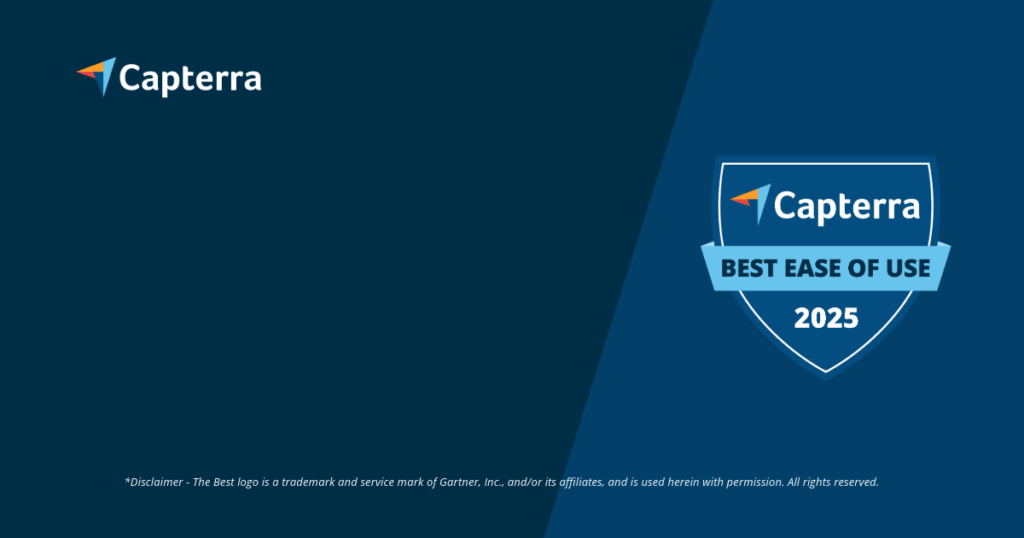Revision documents according to VOB: Your foundation for project success and a legally compliant handover
Hand on heart: The correct creation and handover of revision documents according to VOB is often treated with neglect, while it is a real game changer for the success of your construction projects. These documents are much more than just paperwork – they are essential for a smooth handover according to VOB and are indispensable for everything that follows: operation, maintenance, and potential renovations. In this article, we want to show you why these documents hold such significant importance, what the awarding and contract regulations for construction services (VOB) have to do with it, and how to ensure that these important documents truly meet all requirements. Here at Valoon GmbH, we know the pitfalls of construction documentation inside out and have solutions ready that will make your life easier. So, if you want to get your project documentation, and thus your construction documentation, in order, you have come to the right place. Let’s discover together how you can avoid costly mistakes and bring your projects safely to the finish line.
- Importance: Revision documents are fundamental for project success and a smooth handover according to VOB.
- Long-term benefits: They are essential for the later operation, maintenance, and potential renovations of the building.
- VOB relevance: The awarding and contract regulations for construction services (VOB) play a central role in defining the requirements.
- Objective of the article: To demonstrate how correct revision documents are created in order to avoid mistakes and successfully complete projects.
Revision documents – what exactly are they and why are they so crucial for your project?
Imagine revision documents, often called as-built documents, as the memory of your building. They record in black and white what the building actually looks like after completion or after significant changes. You will find all technical drawings, plans, calculations, descriptions, and proofs in them – everything that documents the performance rendered exactly. It cannot be emphasized enough: these documents are worth their weight in gold! They are the basis for all maintenance and repair work, allow for quick error analysis, and are simply indispensable for later expansions or renovations. Missing complete and correct revision documents according to VOB, can quickly become costly and lead to irritating delays. Moreover, they are an important proof for authorities and insurance companies and a centerpiece of any modern digital construction file software.
The VOB plays a strong role: Its influence on revision documents
The awarding and contract regulations for construction services (VOB), primarily VOB Part C (ATV – the General Technical Terms of Contract for Construction Services), clearly sets the tone when it comes to the necessity and scope of revision documents according to VOB documents. Many DIN standards referenced by VOB/C precisely specify which papers must be presented for which trades (think electrical, heating, ventilation, plumbing). Adhering to these requirements is not just a contractual obligation – it also secures quality and makes construction execution traceable. VOB/B, on the other hand, clarifies the rights and obligations of clients and contractors surrounding the handover of these documents. And this has direct effects on the handover and the final payment. It is therefore worthwhile for everyone involved in construction to engage intensively with VOB requirements so that these documents ultimately fit.In a nutshell: What belongs in your revision documents according to VOB
To avoid misunderstandings or unpleasant surprises later on, we first need to clarify what actually belongs to the revision documents according to VOB documents. Simply submitting a few plans is far from enough – the documentation must truly be comprehensive and detailed. What is required can, of course, vary from project to project and depending on the trade, but there are some core components that are typically always included. Ensuring these documents are complete and up to date is not only essential for the handover but for the entire lifecycle of the building. Incomplete or outdated documentation can make maintenance a nightmare and cause a lot of headaches during later changes. Therefore, our advice is: Pay attention to a clean creation of revision documents.
The must-haves: What should be detailed in the revision documents?
When compiling your as-built documents, it is essential to systematically collect all important information. What must not be missing is generally:
- Technical drawings and plans: Here we mean current floor plans, sections, views, and detail drawings that accurately show the actual condition. For technical trades, these include piping schematics, wiring diagrams, or ductwork plans, for example.
- Documentation of the work performed: This includes daily construction reports, photographic documentation, and measurements. They verify the construction progress and what has actually been achieved. A construction documentation app can be a great help here, by the way.
- Material specifications and manufacturer information: For every material installed and every component, you need product data sheets, declarations of conformity, and approvals.
- Maintenance and operation manuals: These are mandatory for all technical systems and devices to ensure everything operates safely and efficiently later on.
- Inspection protocols and acceptance certificates: Proof of conducted inspections (think of leak tests or electrical inspections) and official handovers must be included. As Datex aptly describes it, it refers to all technical and construction documents that reflect the current condition.
With these building blocks, you ensure that these documents serve their purpose and provide a reliable foundation for the future of your building.
A small but important difference: As-built documentation vs. revision documents according to VOB
Even though the terms are often used interchangeably, there are small but significant differences. An as-built documentation records what a building looks like at a specific point in time – often before renovation or remediation work begins. revision documents according to VOB In contrast, revision documents specifically document the services rendered after the completion of construction work or renovations and the final actual condition. They are essentially the result of the construction execution and show all changes and adjustments that occurred during the project. One could say that these specific documents are the more dynamic version, accompanying and concluding the entire construction process until completion. With a cloud-based construction documentation updating and managing these important papers becomes a child’s play.On a solid foundation: The legal and contractual basics for revision documents according to VOB
The creation of revision documents according to VOB revision documents is not just a matter of good practice but is based on solid legal and contractual foundations. The awarding and contract regulations for construction services (VOB) play the leading role because they define general requirements and specific obligations for clients and contractors. A clearly worded construction contract that precisely outlines what is expected regarding these documents is essential to avoid later disputes and legal issues. This especially concerns the scope, form, and deadlines for the handover of the documentation. These basics should be known by everyone involved in the project to ensure compliant and complete documentation.
- Legal and contractual basis: The VOB forms the foundation for the necessity and design of revision documents.
- Technical specifications: VOB/C and associated DIN standards define specific requirements for the content and scope of the documentation for various trades.
- Contractual obligations: VOB/B clarifies the rights and obligations of clients and contractors regarding the creation and handover.
- Importance of the construction contract: Detailed agreements in the construction contract concerning scope, form, and deadlines are essential for avoiding conflicts.
VOB/C and DIN standards: The technical requirements under scrutiny
In VOB/C, more specifically in the General Technical Terms of Contract for Construction Services (ATV), many trade-specific DIN standards contain concrete requirements regarding documentation. These standards are a fixed part of every VOB contract. Important examples include:
- DIN 18382 for electrical, safety, and information technology systems
- DIN 18381 for gas, water, and drainage systems within buildings
- DIN 18379 for air handling systems
These standards stipulate which specific plans, diagrams, calculations, and descriptions must be submitted as part of the required documentation. With the updating of VOB 2019, the requirements for planning, execution, and maintenance documents have been sharpened further. Contractors often have to submit assembly and work plans even before execution – these then serve as the basis for later revision documents according to VOBhandovers. Compliance with these standards is crucial for the quality and completeness of the documentation.
VOB/B: Clear rules regarding rights and obligations
VOB/B deals with the contractual aspects of construction execution, including obligations surrounding documentation. According to the VOB/B, the client is obliged to provide the necessary documents for execution in a timely manner. In return, the contractor must create and hand over the agreed documents. The absence of these documents or their deficiencies may be considered a defect under VOB/B. This gives the client the right to withhold part of the final payment or even refuse acceptance. The deadlines for the handover are also important; it is often required that the documents are available at least a few weeks before the VOB acceptance, as indicated by various sources. Precise contractual design helps to clarify these points and is part of good change and defect management according to VOB/B.
Contractual agreements: The key to clear relationships
In addition to the general requirements of the VOB, it is essential to document the documentation requirements in detail in the construction contract. This creates clarity and binding commitments for both parties. Important points that should be included in the contract are a detailed description of the services of the documents to be created, the definition of the exact scope (which plans, which level of detail, which formats), clear deadlines for the handover of the documents, and not least the consequences of non-compliance, such as withholding parts of the final invoice. Careful contractual regulation minimizes the risk of disputes and ensures that the client receives the required revision documents according to VOB documents needed for the operation and maintenance of the building. The use of a mobile construction site documentation can significantly simplify the collection of data for these documents.Structure and content refined: This is how your revision documents are made compliant and practically correct.
Um wirklich hochwertige revision documents according to VOB Creating comprehensive documentation requires more than just gathering all the relevant data. It also needs a well-thought-out structure and a clear format. Only then can the documents serve their purpose and be easily understood and utilized by others. Guidelines like VDI 3805 provide valuable tips for content and structure. A logical order, for example by functional categories or trades, makes it much easier to access specific information. The choice of the right format—whether on paper or digital—plays a significant role in the practical usability of these documents. The goal is to create documentation that is not only complete but also user-friendly.
VDI Guideline 3805 and trade-specific tables as your compass
The VDI Guideline 3805 “Product Data Exchange in Technical Building Equipment” is an excellent foundation for the structure and content of planning, execution, and revision documents. It includes among other things trade-specific documentation tables, which list in great detail which information and documents are important for individual groups of systems (such as heating, ventilation, sanitation, electrical). These tables help you to precisely define the scope of your revision documents according to VOB and ensure that you do not forget anything important. Applying VDI 3805 provides for standardized and hence comparable documentation, which is particularly a blessing in complex construction projects involving many different trades. It supports the creation of revision documents with clear specifications.
The core components of a seamless revision documentation
A complete revision documentation that meets the documentation requirements should contain several key components. These provide a comprehensive overview of the construction project and the installed systems. These include:
- Overview plans and detailed drawings: These must show the final “As-Built” condition and clearly represent all relevant installations.
- Technical descriptions of the systems: Detailed function descriptions, performance metrics, and adjustment parameters for all technical systems.
- Maintenance and inspection plans: According to manufacturer specifications and important standards such as VDMA 24186 (maintenance) and VDMA 24176 (inspection), to ensure everything runs smoothly in the long term.
- Spare parts lists and manufacturer directories: Comprehensive lists of all installed components with manufacturer details, model numbers, and where to obtain spare parts.
- Safety guidelines and operating instructions: All information needed for safe operation and handling of the systems.
The careful compilation of these elements is crucial for how valuable your documentation will be later.
Format and organization: Clear structures for easy handling
How you organize your revision documents according to VOB physically and digitally is just as important as its content. Often there are specific requirements for formats, for example, filing in DIN A4 folders with standardized spine labels, so that you can quickly find what you are looking for. A parallel delivery in digital form, usually on a data carrier (such as CD/DVD or USB stick) in common file formats (PDF, DWG), is practically standard today. The documents should be logically structured by functional categories , such as: acceptance protocols, approvals, technical descriptions, plans, maintenance notes, manufacturer directories. A detailed table of contents, often also required in editable form (e.g., as an Excel spreadsheet), makes it easier to navigate through the extensive documentation. A smart construction document management software can greatly support this process and simplify the management of these important documents.Overcoming hurdles: how to avoid mistakes and make your revision documents more efficient
Creating comprehensive and accurate revision documents according to VOB presents many construction companies with real challenges. The range of errors includes incompleteness, outdated information, and poorly organized structures. Such deficiencies can not only jeopardize acceptance but also lead to considerable follow-up costs. But don’t worry: The use of checklists, consistent quality control, and the use of modern technologies such as Building Information Modeling (BIM) can significantly reduce these issues. Early planning of document creation and clear assignment of responsibilities are also key to success. With the right tools and processes, such as those offered by our construction documentation app , the creation of these important documents can be made much more efficient and error-free.
Typical pitfalls: Recognizing frequent errors and deficiencies in revision documents
When compiling revision documents according to VOB , similar errors often arise that can lead to complaints. Common annoyances include incompleteness and missing details, for example, when not all relevant plans or proof are attached. Oftentimes, there are also incorrect or outdated information that sneak in because changes during the construction phase were not consistently documented. Another critical point is the lack of structure and clarity, which makes it difficult for the user to quickly find the needed information. Such deficiencies can lead to created documents failing to fulfill their purpose and, in the worst-case scenario, even serving as a basis for a complaint regarding deficiencies. Subsequent correction is usually a costly and time-consuming endeavor.
Solution approaches: Checklists, quality control, and the BIM advantage
To ensure the quality of your documentation, a proactive approach is required. The use of detailed checklists, which list all required documents and information, helps you not to forget anything and ensures completeness. A systematic quality control before handover, in which the documents are checked for accuracy, currency, and readability, is essential. A huge advantage here is the method of Building Information Modeling (BIM). “As-Built” models, which digitally represent the actual construction state, can serve as a central data source for the As-Built documentation. The integration of CAFM systems (Computer-Aided Facility Management) also allows for seamless transfer of data for later building operation. The use of a cloud-based construction documentation supports these modern approaches perfectly.
Practical tips for a smooth creation of your revision documents
A successful creation of important construction documents does not begin just shortly before the deadline, but requires continuous project support. Early planning and documentation are the be-all and end-all; ideally, you should determine at the project start what documentation requirements will be set and implement a system for capturing relevant data. Clear responsibilities must be defined: Who takes care of which information? Who checks the documents? Thecollaboration with all parties involved – planners, lead contractors, executing companies, and the client – is absolutely crucial to ensure that all necessary information comes together and meets the expectations. Regular coordination and the use of collaboration platforms can work wonders here. Caution, pitfalls! What are the risks of deficient revision documents according to VOB? revision documents according to VOB den Erwartungen entsprechen. Regelmäßige Abstimmungen und der Einsatz von Kollaborationsplattformen können hier wahre Wunder wirken.Achtung, Fallstricke! Was droht bei mangelhaften Revisionsunterlagen nach VOB?
Missing or defective revision documents according to VOB are not only annoying but can have far-reaching legal and financial consequences for the contractor. Courts have repeatedly confirmed that incomplete documentation can constitute a defect in the construction service. This gives the client various rights, ranging from withholding payments to compensation claims. Keeping these potential consequences in mind, it becomes clear why the creation and handover of documentation should take the highest priority. A meticulous creation of revision documents is therefore also an important measure for risk minimization.
- Legal classification: Missing or faulty revision documents can be considered a defect in the construction service.
- Financial risks: The contractor faces rights of retention regarding compensation and possible claims for damages.
- Judicial practice: Numerous rulings confirm that incomplete documentation can have significant consequences.
- Preventive measure: A careful creation serves to minimize risks and ensures contract performance.
Deficient construction performance: when documents are missing or faulty
If contractually agreed revision documents according to VOB are not delivered or are incomplete or faulty, this can be regarded as a defect of the owed construction service . This applies especially when the documents are essential for the proper operation, maintenance, or safety of the installation. The court has, for example, ruled that missing revision documents constitute a defect that entitles the client to withhold the final payment. The costs for the subsequent creation or procurement of the missing documents can be substantial and can significantly impact the contractor.
Right of retention and compensation: Financial risks for contractors
If it is established that the revision documents according to VOB are defective, the client generally has a right of retention regarding compensation. According to common legal practice, the amount withheld can be twice the expected costs of remedying the defects—i.e., the costs that would be incurred for the creation of the missing documents. Furthermore, the client may be entitled to claims for damages if damages arise from the defective documents, for example, due to increased maintenance costs or operational disruptions. These financial risks underscore how important correct and complete documentation is, which also plays a role within the change and defect management according to VOB/B .
Court decisions as a guide: The practice of the judiciary
Several court rulings confirm how important complete documentation is. In addition to the aforementioned ruling of the OLG Brandenburg, decisions from both the Federal Court and OLG Bamberg (Az. 3 U 93/09) are relevant. These rulings emphasize that the absence of required documentation, especially in complex technical systems, can represent a significant defect that prevents acceptance maturity. The courts thus support the clients’ position, who insist on a complete handover of documents before the service is considered contractually fulfilled. This jurisprudence should be a real impetus for contractors to pay the utmost attention to their documentation obligations.Acceptance at stake: Why revision documents are so important in the acceptance process according to VOB
Die handover is a super important milestone in any construction project. It marks the transfer of risk to the client and is a prerequisite for the final payment to become due. Missing or incomplete revision documents according to VOB can significantly disrupt this process, and may even lead to acceptance being refused. It is therefore absolutely critical to adhere to the contractually agreed deadlines for handover of the documentation and to ensure that all documents meet the requirements. The acceptance protocol should clearly record the handover and the condition of the delivered documents to avoid later ambiguities.
Refusal of acceptance: A real risk in the absence of documentation
If the contractually required documents are not available or are only defective at the acceptance, the client can refuse to accept the construction work. This is especially the case when the documentation is essential for the use, operation, or maintenance of the facility, and its absence constitutes a significant defect. The jurisprudence, for example, through the OLG Bamberg (3 U 93/09), supports this view. A refusal of acceptance has far-reaching consequences: the risk for the construction performance remains with the contractor, the warranty period does not begin to run, and the final invoice is not due. The timely and complete submission of the revision documents according to VOB is thus a key factor for a successful handover according to VOB.
Deadlines and appointments in view: When do the documents need to be on the table?
The deadlines for the handover of the documentation should be clearly regulated in the construction contract. It is often agreed that the complete documentation is to be submitted to the client for review several weeks before the actual acceptance date is presented to the client for review. A typical timeframe is, for example, the handover no later than three weeks before the VOB acceptance and no later than two weeks before the instruction of the later operators, as required. This lead time allows the client to carefully review the documents and to request any deficiencies or gaps in a timely manner before the acceptance. Adhering to these deadlines is crucial to avoid delays in the acceptance process and to ensure that the revision documents according to VOB are ready on time.
The acceptance protocol: Documenting the handover of the revision documents
The acceptance protocol should explicitly note the handover of the documentation. It is advisable to detail which documents were handed over in what form and whether these were recognized by the client as complete and in accordance with the contract. Any reservations or defects found in these documents should also be noted in the protocol, as well as deadlines for their correction. Clear documentation in the acceptance protocol creates legal certainty for both contracting parties and helps avoid later disputes about the scope and quality of the submitted documents. A digital construction file software can help make this process transparent and traceable.Costs vs. Benefits: Why investing in top revision documents according to VOB pays off
Of course, the creation of detailed and complete revision documents according to VOB costs the contractor money at first. But this investment pays off in the long run for both sides – and how! For the client, high-quality documents are the basis for efficient and cost-effective building operation. For the contractor, proper documentation means less risk and avoids costly corrections or legal disputes. The initial expenses for careful documentation are therefore in a very good ratio to the long-term benefits and the preservation of the building’s value. The use of a construction document management software can also help optimize the creation effort.
Creation costs: What is a reasonable effort?
The costs for creating documents can vary, of course, depending on the complexity of the construction project and the level of detail required for the documentation. It is important to realistically plan this effort already in the offer calculation. The amount – a figure that is often criticized as too low when documents have to be completely newly created externally. The actual costs for subsequent creation by third parties can be significantly higher. Early and accompanying documentation during the construction phase is usually less expensive than a later reconstruction. Therefore, investing in qualified personnel or specialized service providers for creating the revision documents according to VOB can definitely be worth it to ensure quality and avoid follow-up costs.
Long-term benefits for the client through comprehensive documentation
For the client (and later users of the building), complete and correct revision documents according to VOB provide a whole range of advantages that go far beyond mere contract fulfillment:
- Efficient maintenance and upkeep: Accurate plans and manufacturer specifications enable targeted and quick maintenance work. This minimizes downtime and extends the lifespan of the facilities.
- Quick troubleshooting: In case of a malfunction, technicians can quickly identify and fix sources of errors based on the documentation. This saves costs and increases operational safety.
- Basis for future modifications and extensions: Precise as-built plans are indispensable for planning and executing later construction measures – without unpleasant surprises.
- Proof to authorities: The documents serve as important proof of compliance with legal regulations and technical standards.
These advantages make it clear why clients should insist on the delivery of comprehensive documentation.
Benefits for the contractor: Avoiding disputes and building a good reputation
The careful creation and handover of documents also brings significant advantages for the contractor. By providing complete and defect-free documentation of their services, they minimize the risk of disputes regarding contract fulfillment and ensure prompt payment of the final invoice. Professional documentation is also a true quality feature and contributes to a positive reputation of the company. Satisfied clients who receive comprehensive and usable documentation are more likely to place follow-up orders or recommend the company. Therefore, investing in good construction documentation is also an investment in one’s own competitive edge and customer satisfaction. A mobile construction site documentation can support this process and increase efficiency.Ready for the future: Digitalization and smart management of your revision documents
The importance of high-quality revision documents according to VOB will increase in the future, that much is certain. The ongoing digitalization in construction, especially through methods like Building Information Modeling (BIM), offers us entirely new opportunities for a more efficient and transparent creation and management of these important documents. A proactive approach that considers documentation requirements from the outset and uses modern tools is key to success. We at Valoon GmbH support you with innovative software solutions to optimize your communication and documentation processes and thus effortlessly tackle the challenges involved in creating these important documents. By transforming everyday messenger communication into structured project data, we are combating the flood of information and significantly simplifying data collection.
The key insights for your revision documents according to VOB at a glance
To sum up: The careful creation and handover of revision documents according to VOB is crucial for everyone involved in construction. They are not only a contractual obligation but also the foundation for a successful acceptance, smooth building operation, and the avoidance of costly legal disputes. The completeness, correctness, and timely availability of these documents should have the highest priority. A clear contractual regulation of the scope and requirements is just as important as consistent implementation throughout the entire construction process. Adhering to relevant DIN standards and VDI guidelines helps ensure the quality of documentation.
Outlook: The role of digitalization and automation
The future of revision documents according to VOB is digital, and there is no way around it. Tools like construction document management software, BIM, and cloud-based construction documentation are already revolutionizing the way data is captured, managed, and handed over. The automatic creation of ‘As-Built’ models from digital construction process data, integration with CAFM systems, and the use of mobile devices for data collection directly on-site (mobile construction site documentation) will further enhance efficiency and reduce susceptibility to errors. These technological developments offer enormous potential to simplify the creation of construction documents and sustainably improve their quality. Companies that recognize and capitalize on these trends early on secure a clear competitive advantage.
Our recommendations for clients and contractors
Both clients and contractors can actively contribute to ensuring that the creation and handover of documentation runs smoothly. Clients should precisely define in the tender what documents they expect in what form and quality. Contractors, in turn, should understand the documentation creation as an integral part of their service and plan cleverly from the start. Utilizing modern software solutions, such as those offered by Valoon GmbH, can help you efficiently capture and structure data. Our platform transforms everyday messenger communication into actionable project data, thus facilitating the creation of comprehensive construction documents. Invest in professional documentation – it pays off! Contact us today to start your individual consultation and optimize your documentation processes. Visit our Contact page and find out how we can help you make your projects even more successful.
What exactly are revision documents according to VOB and why are they so important for my construction project?
Revision documents according to VOB document the actual final state of your building after completion of all works. They are crucial for the VOB acceptance, subsequent maintenance, upkeep, and possible modifications as well as serving as evidence to authorities.
What consequences can I expect if my revision documents are incomplete or incorrect?
Incomplete or incorrect revision documents are considered defects in the construction performance. This can lead to a right of retention on the final payment (often double the creation costs), claims for damages and even to a refusal of acceptance leading.
By when must the revision documents according to VOB at the latest be handed over?
The handover deadlines should be contractually clearly regulated. It is customary to hand over no later than 2-3 weeks before the VOB acceptance and before the instruction of the later users, to allow for a review.
How can I ensure that my revision documents meet the VOB requirements?
Define the scope and quality precisely in the construction contract. Use checklists, pay attention to compliance with relevant DIN standards (e.g., DIN 18381, 18379, 18382) and conduct a careful quality control before the handover.
Can digital tools like those from Valoon simplify the creation of revision documents?
Yes, digital solutions like Valoon optimize data capture directly from the construction site (e.g., via messenger), automatically structure information and facilitate centralized management. This significantly reduces the effort and minimizes errors.








